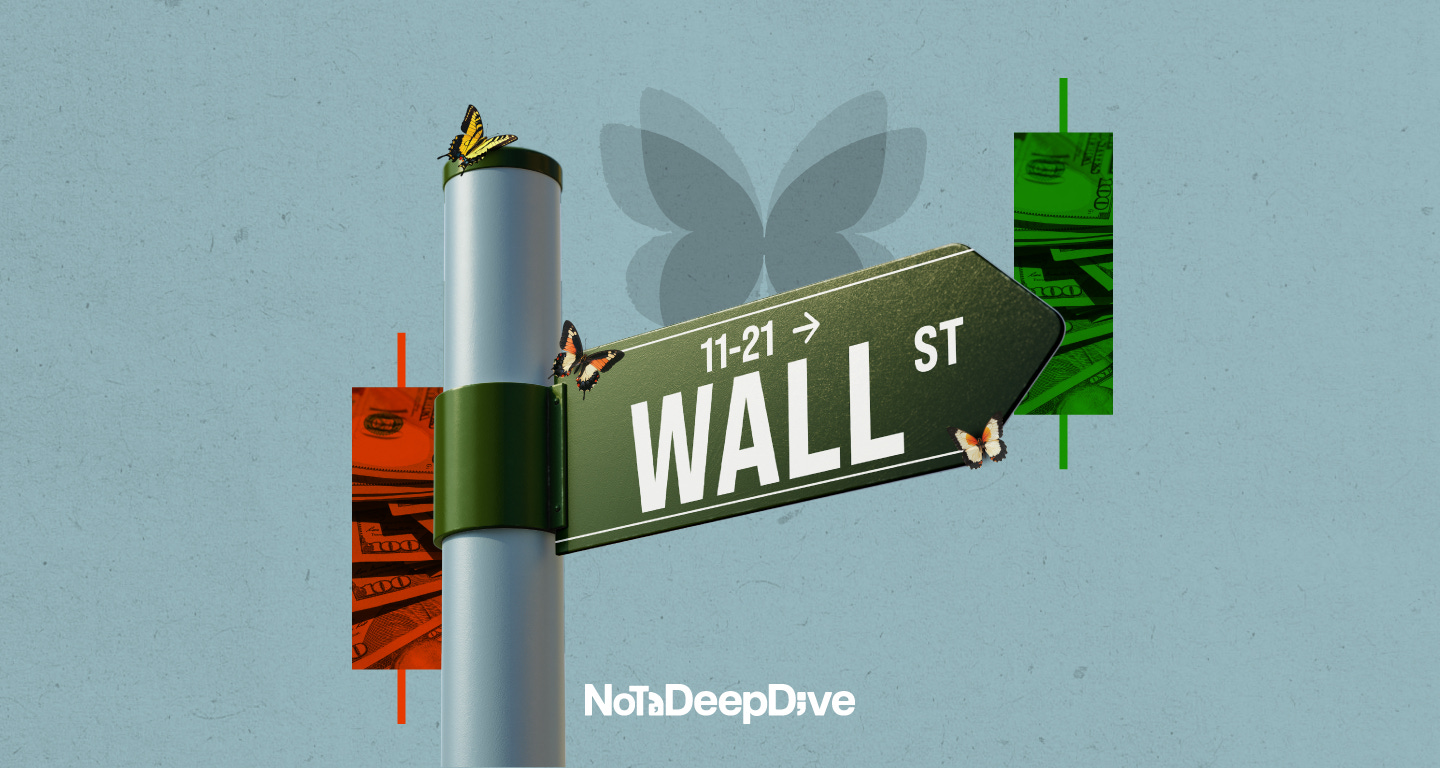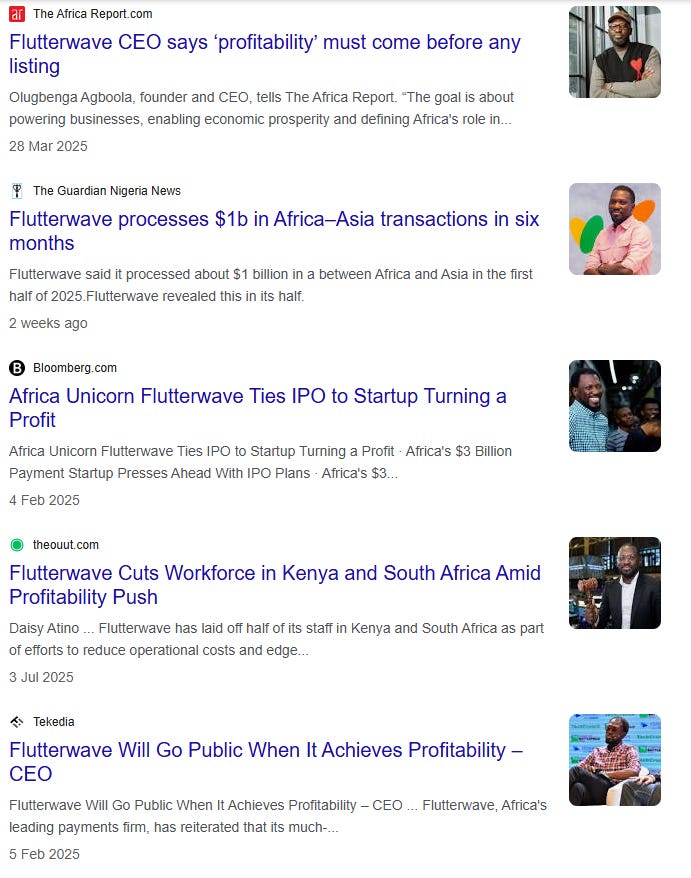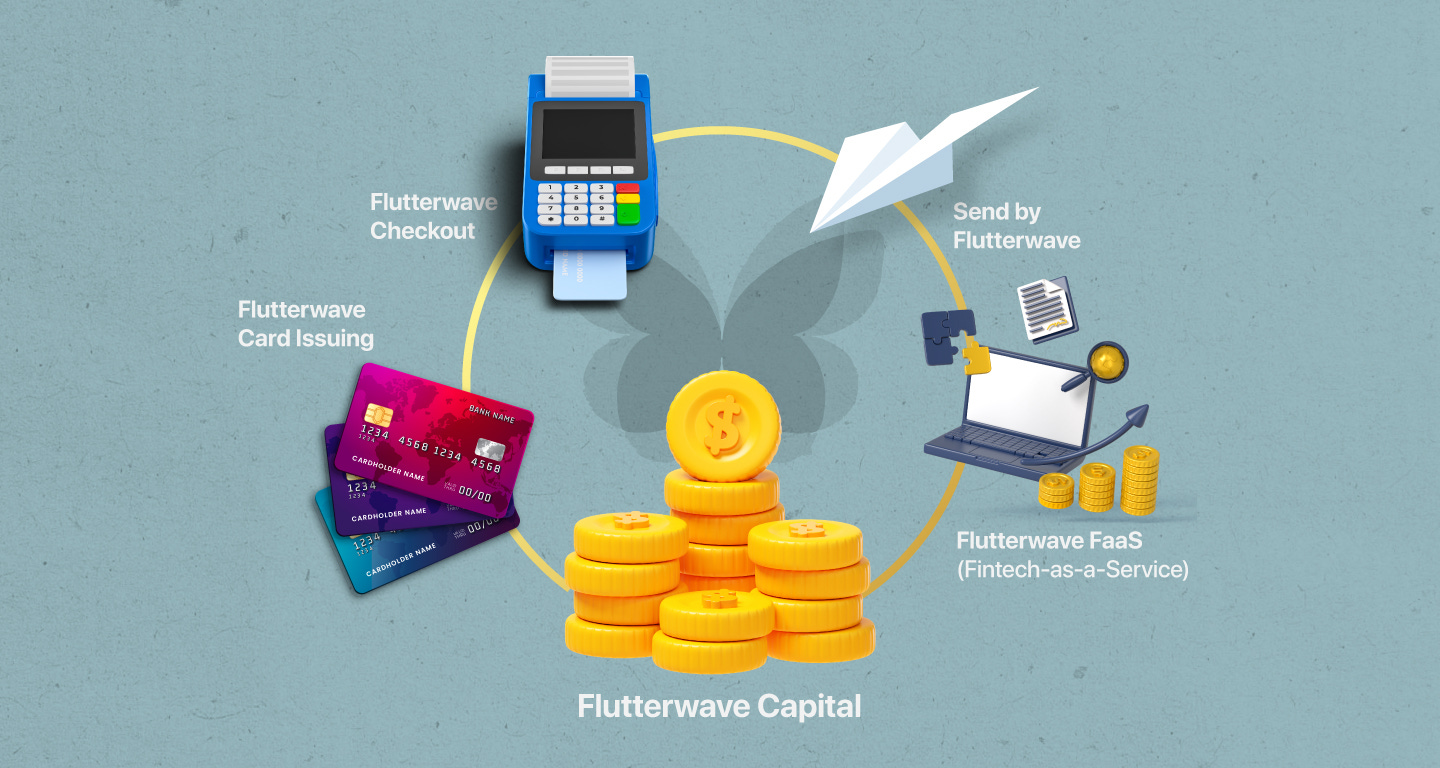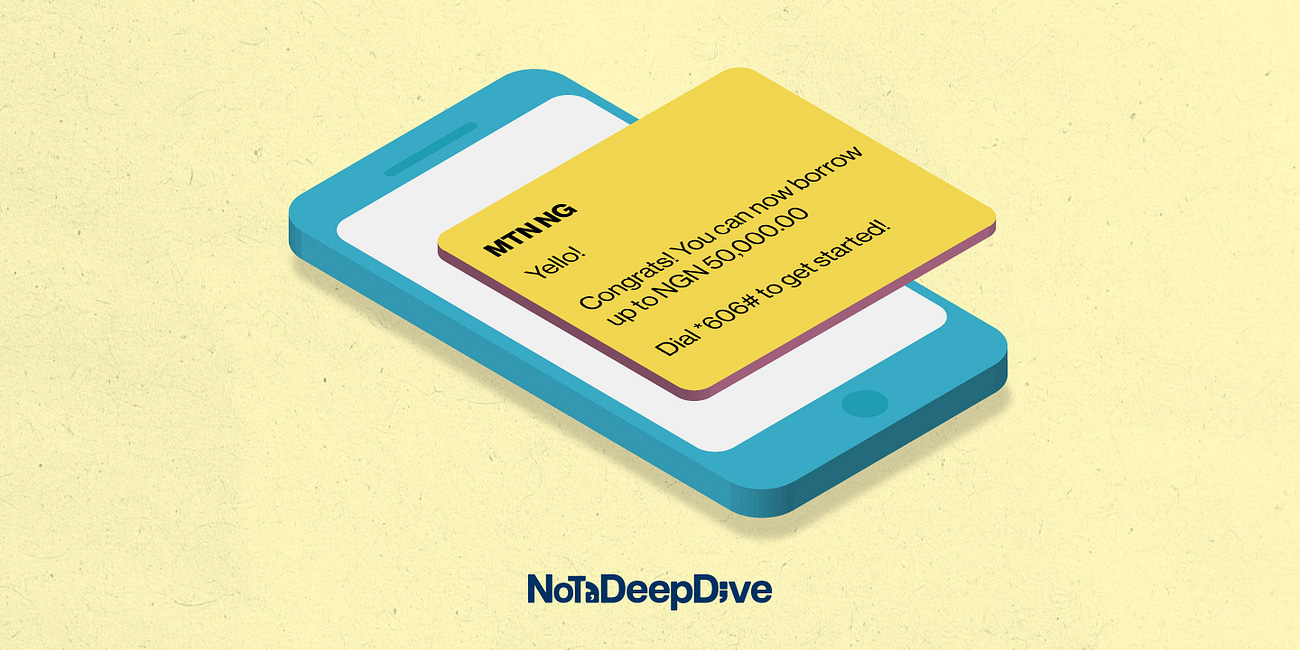The Butterfly Memos
Flutterwave's rehearsal for the big stage
If you missed last week’s newsletter, catch up here. If this newsletter was forwarded to you, become a subscriber while it’s still free:
TOGETHER WITH CREDIT DIRECT
Behind every percentage is a reality shaping your wallet and your decisions. The July Inflation Report helps you see the full picture, so you’re not just reading the news but understanding what it means for you.
The Butterfly Memos
Sometimes, a memo from a company’s founder is a big bag of nothing — a PR spiel written by an ex-journalist who now works in marketing, tidied up by a busy CEO, and left to gather dust on the company blog.
But memos are also clues. Read them over the years and they show how a company thinks, what it celebrates or hides, and what it’s trying to convince the outside world (and itself) of. And for startups, which aren’t required to share audited numbers or quarterly earnings, these reflections are often the only semi-official record we get.
So when Flutterwave’s cofounder and CEO, GB Agboola, broke from tradition on August 11 and published a half-year memo — not his usual annual reflection — it was worth paying attention.
Why a half-year note now? Because 2025 is a year where everything is on the line.
The IPO question hangs over Flutterwave like Lagos humidity. Will the butterfly land on the New York Stock Exchange? The company keeps being coy, but if you read the memo, the answer is: “Yes, we’re getting ready.”
The stakes are huge. A successful NYSE debut would crown Flutterwave as Nigeria’s most important startup to date, cement GB’s legacy, and, frankly, settle a years-long debate about whether African fintech can play in the public markets without getting chewed up.
Profitability as permission
American public markets have been unkind to African startups. Swvl listed in 2021 at a $1.5 billion valuation; today, it’s worth about $34 million. Jumia’s shares jumped this week, pushing its market cap to $1.09 billion, but it’s still a far cry from the $3.6 billion it commanded in 2020.
Flutterwave is familiar with the precedent. It doesn’t want to ring the bell and then collapse in a year. So GB’s memo drives home the same point the company has been making all year: profitability first, IPO later.
“We’re not chasing vanity metrics. We’re building a company that outlasts the hype, that scales with discipline, and that puts African innovation at the centre of the global economic map.”
Behind that line are hard decisions. Flutterwave has pulled back from South Africa and trimmed its East Africa workforce. Insiders say headcount is down to about 600, from a peak near 800.
And here’s where memos become really useful. In a 2023 reflection, GB bragged about the “dream team” of executives he’d hired the year before:
“2022 was special because we had the privilege of adding more world-class leaders to our team to further our ambition. To name a few, Emmanuel (Head of Risk, Africa), Oneal (Chief Financial Officer), Gurbhej (Chief Technology Officer), Clinton (VP, Risk Partnerships), and our very own Mansi (Chief People & Culture Officer).”
Per LinkedIn and sources close to the business, all the names GB highlighted have left.
It’s an interesting dismantling of what was once considered an IPO-ready bench. The expensive “Wall Street hires” are out, replaced by a leaner, cheaper operation designed to get margins in shape.
Here’s another interesting bit:
“We completed our first-ever group audit and consolidated financials.”
It means the numbers across all Flutterwave entities have been independently scrubbed. The goal is to have no nasty surprises when it’s time to sell the company to the public market.
Focusing on what makes sense
Flutterwave hasn’t abandoned its core story: it wants to be the rails for payments across Africa.
The company is now operational in far more markets than Paystack (insiders say 16 African countries compared to Paystack’s four). Expansion is expensive and slow, but it’s also Flutterwave’s moat. If you’re a multinational expanding across Africa, Flutterwave is inevitable. That’s a compelling message for Wall Street.
Licensing is another part of the puzzle. In H1 2025, Flutterwave added 20 U.S. Money Transmitter Licenses, bringing its total to 34, and secured approvals in Ghana, Cameroon, and Senegal. Add in the $1 billion in Africa–Asia transaction volume it says it processed in six months, and you see what an IPO roadshow could sound like: big markets, regulatory credibility, and corridor growth.
Behind the “connecting Africa” story are tough realities: high staff attrition in engineering, patchy documentation, fragile code, and customer-facing outages when changes go wrong. Typical problems for a fast-growing startup.
Flutterwave’s fix has been to narrow its attention. Two people familiar with the business said the company now treats its highest-volume merchants like banks treat high-net-worth individuals: they get the cleanest APIs, dedicated support squads, and the fastest fixes. The quickest route to profitability may be keeping the whales happy.
Learning from Jumia
If you are new here, we link everything to Jumia
I’m not sure I’ve seen a startup talk this much about cost management and efficiency. (It feels very Jumia.)
The difference is timing. Jumia waited until after its IPO to slash costs and exit markets. Investors punished it. Flutterwave is trying to flip that script: cut now, consolidate now, audit now. By the time it rings the bell, it wants to present control, not excuses.
The SME angle is gone
Something that’s largely missing in GB’s latest memo: Small and Medium Enterprises (SMEs)
His 2020 reflection highlighted the Flutterwave Store — an era when fintechs thought virtual storefronts for small businesses would be the next big thing. That made sense during the 2020 e-commerce boom. But this time? Not a word.
Across four previous memos, this is the first where SMEs don’t appear at all. The strategy has shifted firmly to enterprise and cross-border corridors. The “SME angle” looks done.
Security scars
Security was Flutterwave’s sore spot in 2023 and 2024.
February 2023: a hack and a ₦2.9 billion recovery effort.
October 2023: POS merchants ran off with ₦19 billion across 6,000 accounts.
2024: another breach, ₦11 billion gone.
Each incident spilled into the media, to the company’s consternation.
The good news? Flutterwave has now gone a full year without a (public) breach. Maybe the ducks are in a row. Maybe it’s just luck. Either way, a one-year streak is worth noting.
The odds and ends
Two lines worth pausing on:
GB noted the company “said no to payment volume that didn’t serve our long-term goals.” (Make of that what you will.)
Flutterwave’s insistence that Send, its remittance product, is a growth engine. The hook is simple: a flat $1 fee per transfer. It’ll be interesting to see the real figures when it goes public. (Especially given that the product was discontinued in major markets for the better part of a year)
IPO markets have thawed (what can I say, the public markets are fickle). Circle’s June IPO was a success, and Chime followed hot on its heels. Now Klarna’s gearing up to go. If they can test the water after a cold stretch, why shouldn’t Flutterwave flex its wings too?
If FY 2025 ends profitably, dare we say Flutterwave could be dancing toward a 2026 IPO? Right now, the butterfly is flapping, and somewhere, that S-1 draft is taking shape.
See you on Sunday!
The big, beautiful business of airtime lending
Happy new month! I have three simple requests for every Notadeepdive subscriber. I’ll add my requests at various points throughout the newsletter; be sure to look out for them!
Smash the like button!









Laughed out at the Jumia part. Enjoyable as always.
Thank you for writing this, Muyiwa. When I saw the half-year interview making the rounds a few weeks ago, it felt like a scripted play that I did not understand and I'd hoped you'd write about it. I'm glad you did.
NotaDeepDive is an excellent companion for Friday happy hour 'gists'